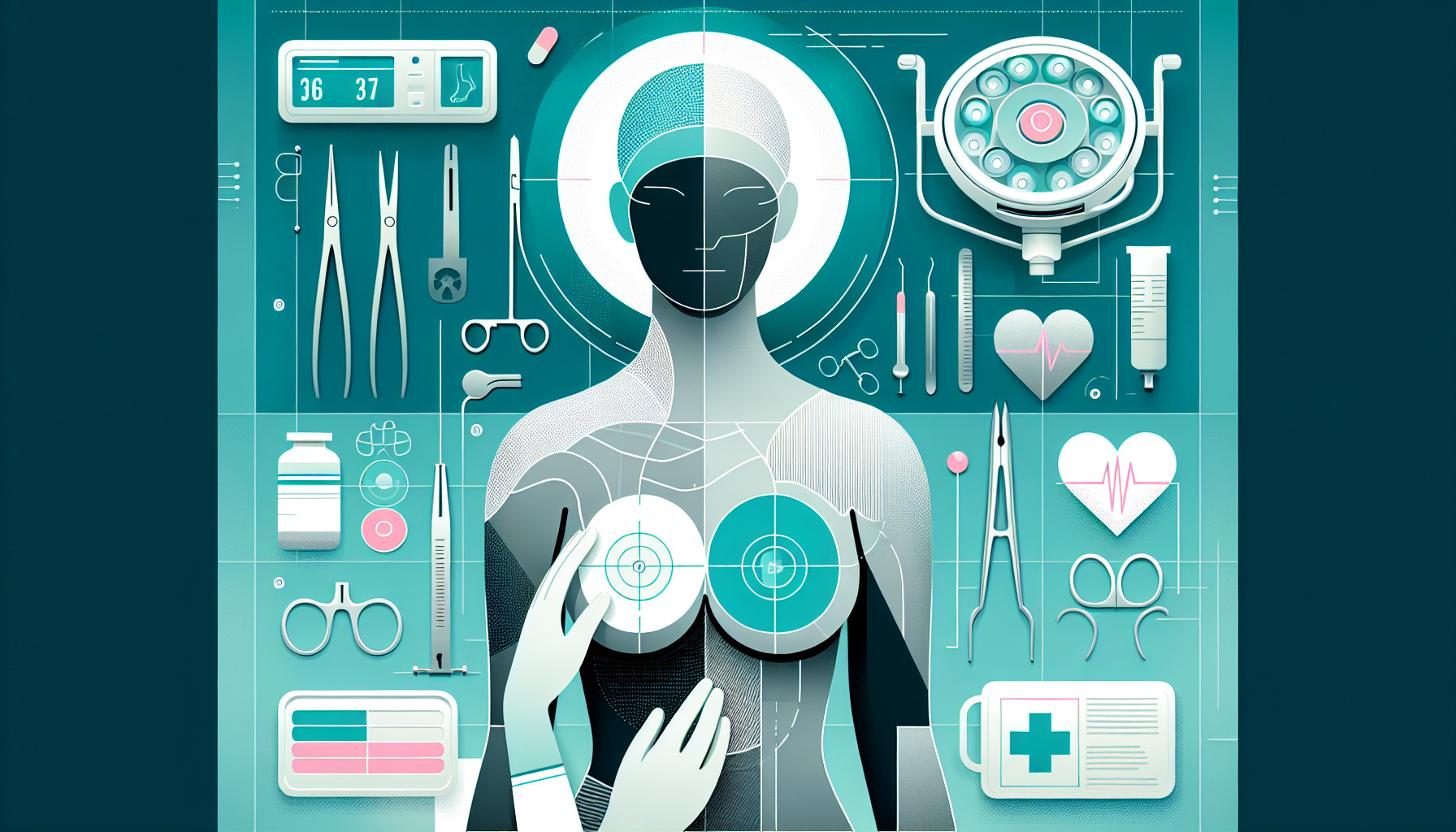Our Summary
This research paper explores the ongoing debate surrounding the use of radiation therapy and breast reconstruction after a mastectomy (breast removal surgery) in the treatment of breast cancer. Both methods have become more common in recent years, but they can complicate each other - radiation can cause issues in the reconstructed breast, while the reconstructed breast can make radiation treatment more complex. The goal is to find a way to limit these problems without affecting the cancer treatment or the appearance of the reconstructed breast.
There are still many questions that need to be answered, such as what type of reconstruction should be used with radiation therapy, when the reconstruction should be done in relation to the radiation therapy, and if the radiation should be directed at the tissue expander or the implant in women who choose a two-stage reconstruction process.
The paper reviews recent evidence to try and answer these questions, with the goal of finding the best way to combine radiation therapy and breast reconstruction in the treatment of breast cancer.
FAQs
- What are some of the complications that can arise when combining radiation therapy and breast reconstruction in the treatment of breast cancer?
- What are some of the unresolved questions regarding the use of radiation therapy and breast reconstruction post-mastectomy?
- Does the research paper suggest when the reconstruction should be done in relation to the radiation therapy for the most effective treatment of breast cancer?
Doctor’s Tip
A doctor might advise a patient undergoing breast reconstruction to carefully follow post-operative care instructions, including proper wound care and monitoring for any signs of infection. They may also recommend regular follow-up visits to monitor the healing process and address any concerns promptly. Additionally, the doctor may suggest avoiding activities that could put strain on the reconstructed breast during the recovery period to promote optimal healing. It is important for patients to communicate openly with their healthcare team about any questions or concerns they may have throughout the reconstruction process.
Suitable For
Patients who are typically recommended for breast reconstruction after a mastectomy include:
- Women with early-stage breast cancer who have undergone a mastectomy as part of their treatment plan.
- Women who have a high risk of developing breast cancer and have chosen to undergo a prophylactic mastectomy.
- Women who have undergone a mastectomy due to a genetic mutation that increases their risk of breast cancer, such as BRCA1 or BRCA2.
- Women who have undergone a mastectomy as part of treatment for breast cancer and wish to restore their breast shape and improve their self-image.
It is important for patients considering breast reconstruction to consult with their healthcare team to determine if they are suitable candidates for the procedure and to discuss the risks and benefits of reconstruction in their specific case.
Timeline
Before breast reconstruction, a patient typically undergoes a mastectomy to remove the breast tissue affected by cancer. This can be a physically and emotionally challenging experience for the patient. After the mastectomy, the patient may choose to undergo breast reconstruction to restore the appearance of the breast. This can involve either immediate reconstruction, where the reconstruction is done at the same time as the mastectomy, or delayed reconstruction, where the reconstruction is done at a later time.
If the patient chooses to undergo radiation therapy after the mastectomy, this can complicate the reconstruction process. Radiation therapy is typically used to kill any remaining cancer cells in the breast area, but it can also damage the surrounding tissue and affect the outcome of the reconstruction. The timing of the reconstruction in relation to the radiation therapy is an important consideration, as the radiation can cause issues with the reconstructed breast if done too soon.
After the reconstruction, the patient will need to undergo follow-up appointments to monitor the healing process and ensure that the reconstruction is successful. The patient may also need additional treatments or procedures to address any complications that arise during the reconstruction process.
Overall, the decision to undergo breast reconstruction after a mastectomy can be a complex and personal one for the patient. It is important for patients to discuss their options with their healthcare team and weigh the potential risks and benefits of both reconstruction and radiation therapy in order to make an informed decision about their treatment plan.
What to Ask Your Doctor
What are the different types of breast reconstruction options available to me after a mastectomy?
How will radiation therapy affect the outcome of my breast reconstruction surgery?
Should I undergo breast reconstruction before or after radiation therapy?
Will radiation therapy increase the risk of complications or affect the appearance of the reconstructed breast?
How will radiation therapy affect the timeline of my breast reconstruction process?
Are there any specific considerations or precautions I should take if I choose to undergo both radiation therapy and breast reconstruction?
What are the potential risks and benefits of combining radiation therapy and breast reconstruction in my specific case?
Are there any alternative treatment options or strategies that may be more suitable for me considering my individual circumstances?
How will the combination of radiation therapy and breast reconstruction impact my long-term health and quality of life?
Can you provide me with any additional resources or information to help me make an informed decision about breast reconstruction in the context of my breast cancer treatment plan?
Reference
Authors: Ho AY, Hu ZI, Mehrara BJ, Wilkins EG. Journal: Lancet Oncol. 2017 Dec;18(12):e742-e753. doi: 10.1016/S1470-2045(17)30617-4. PMID: 29208440
